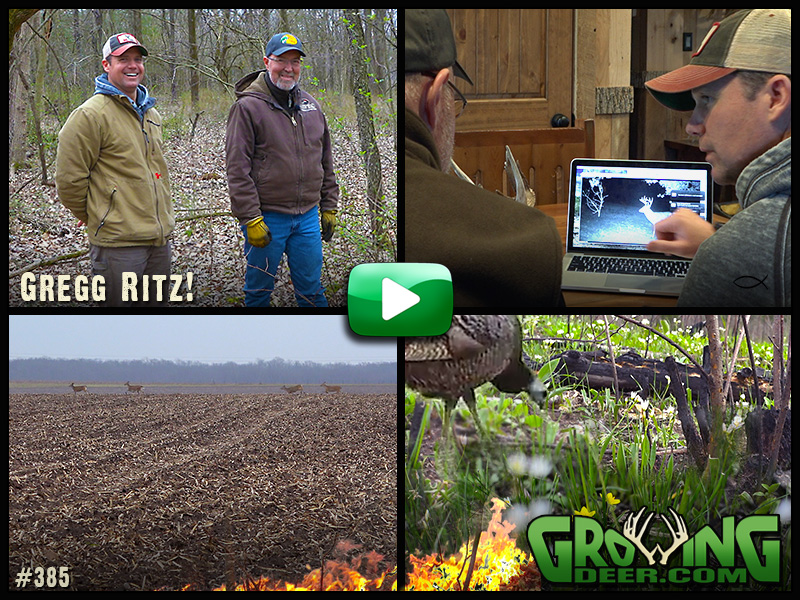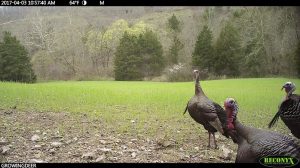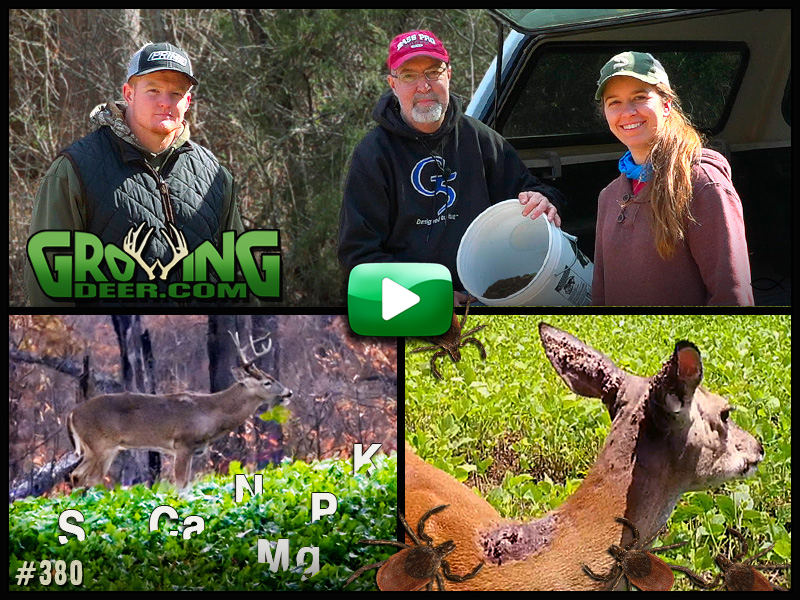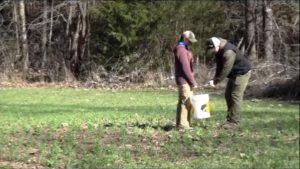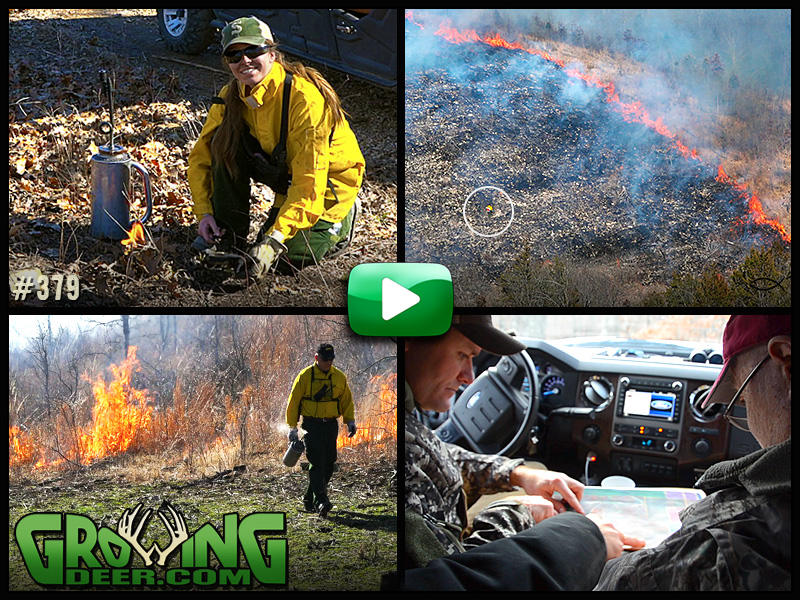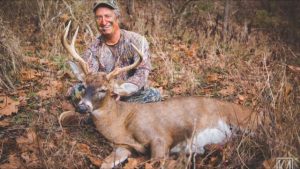Category: Whitetail Habitat Management
Preparing For Summer: Ticks
Here at The Proving Grounds it seems like summer is just around the corner. Antlers are growing, fawns will be dropping any day and Eagle Seed soybeans are being planted. Soon we will be hanging Summit Stands, trimming lanes and beginning several habitat projects. That means a lot of time in the woods.
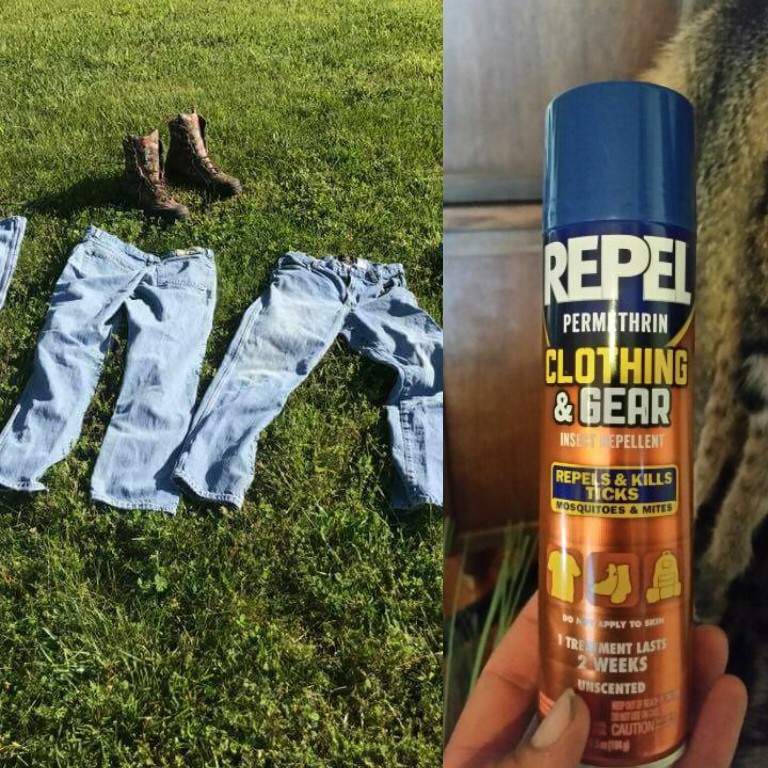
We lay all our clothes out on the ground and spray both the front and back with permethrin.
As many hours as we spend in the woods, we come across lots of ticks! Ticks can carry many diseases. We help protect our deer herd from these by feeding Antler-X-Treme which reduces ticks and other parasites, but what about us? Tick-borne diseases can be harmful, and in some cases, fatal to humans. Tick-borne diseases such as Rocky Mountain spotted fever or Lyme disease are serious and precautions need to be considered before heading into the woods this summer.
Before we enter the woods, we spray all our clothes with Permethrin. Permethrin repels and even kills ticks. One treatment will often last up to two weeks and several washings. However, Permethrin should not be applied to your clothes while wearing.
We lay out all our clothes that we will be using in the field, spray them with Permethrin and then let them dry before wearing. This has greatly reduced the number of ticks that we find after being in the woods. Fewer ticks mean there is less of a chance of contracting a tick-borne disease.
If you are planning to be in the woods this summer, start preparing now. Treat your clothes with permethrin or find another tick repellant and enjoy Creation without having to worry about ticks.
Enjoying Creation,
Daniel
The Power Of Cover Crops
Over the past several weeks we have had a lot of rain at The Proving Grounds. Our neighbor poured out 11+ inches from his rain gauge during one weekend. Talk about a toad straggler!
Water can be a powerful force. There are many that have had massive damage to their homes and properties. We had substantial damage at The Proving Grounds. The main road of our property runs through a bottom along the base of the Ozark Mountains. Like many low areas in mountainous country, there is a small stream that passes through. In torrential downpours, like the one we recently experienced, the creek rises very fast due to the runoff from the mountains. When these occasional rainstorms roll in there is a lot of water that moves through the property very quickly!
Not only are the road and creek located in these low terrain areas, but so are many of our food plots. With thousands of gallons of water rushing through our food plots as the creeks overflow, you would think it would wash away our food plots. Not so.
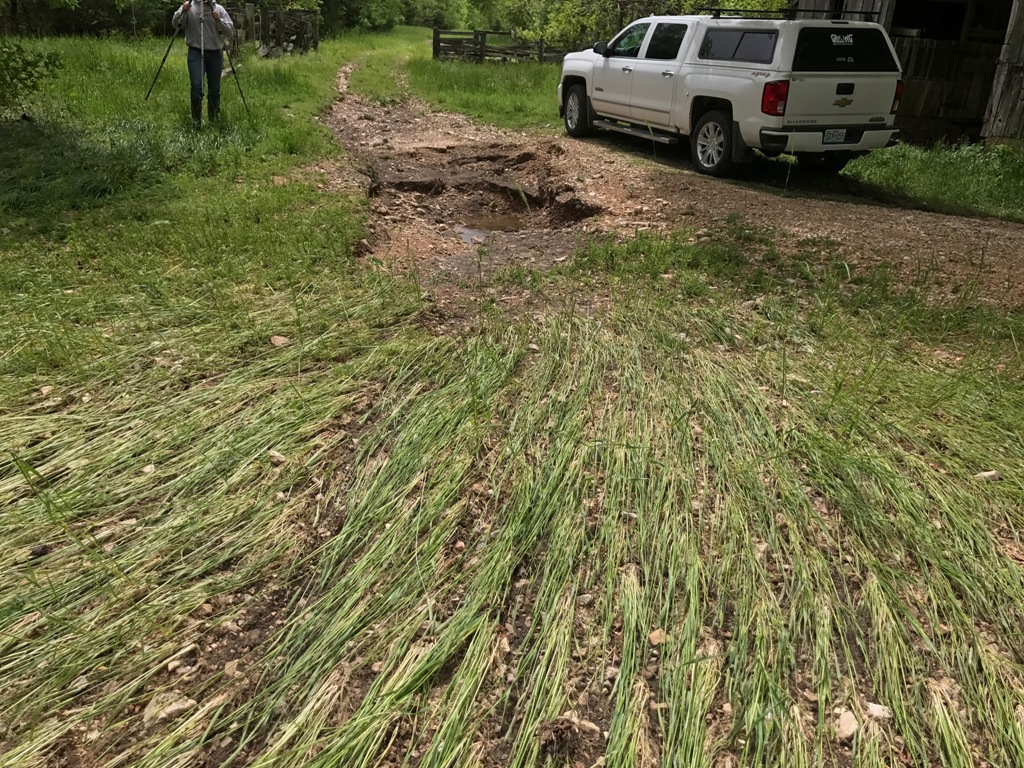
Notice how the erosion stopped when the water hit the cover crop!
The majority of the damage left in the wake of the recent storm was focused on our roads (where no vegetation grew). Several portions of the road (which runs through many of our food plots) washed completely out. Our food plots show no signs of erosion and still have our cover crop in place. To be honest, we are shocked! This is a great example of the power and value of food plot cover crops.
Cover crops have many benefits. They pull nutrients up the soil profile, making them available to food plot crops. Cover crops protect the soil from wind and water erosion, hold soil moisture, help reduce weeds, and promote healthy soil structure among many other things.
Last fall we planted a cover crop of cereal rye. This spring the rye shot up and is now protecting our soil until we are able to plant Eagle Seed soybeans. The cereal rye has done many things for our soil but one of the most impressive is holding our food plots intact through massive flooding. It’s hard to imagine what our food plots would have looked like if they had no protection by a cover crop.
Stay tuned throughout the year as we explain step-by-step our food plot planting and management techniques!
Enjoying Creation,
Daniel
Farm Country Habitat Management – Episode #385
New Video
Follow along as we travel to northwest Illinois to develop a deer management plan for Greg Ritz. Greg and Grant refine his habitat and hunting plan!
 Short Clip:
Short Clip:
Find out why an owl hooter and crow call can get toms fired up and located!
New Weekly Blog:
Grant shares his tips for scouting and getting great turkey trail camera pictures!
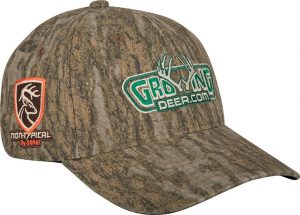
Tip of the Week:
They’re finally here! GrowingDeer hats are now available!
How To Help Deer Reach Their Potential – Episode #380
New Video
Find out how reducing ticks and taking soil samples can help your deer herd reach its potential!
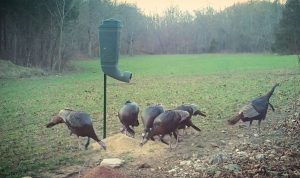 Short Clip:
Short Clip:
Waiting for turkey season? See what we watch to get through the preseason blues!
New Weekly Blog:
Find out how a soil sample can save you time and money, while maximizing your food plot’s yield!
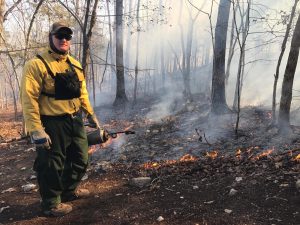
Tip of the Week:
Prescribed fire this time of the year can create great fawning and nesting habitat for critters this spring and summer!
Recipe for great habitat and hunting – Episode #379
New Video
Watch and learn our strategies and tips for improving wildlife habitat as the GrowingDeer Team lights it up with prescribed fires. Plus, find out why Trophy Rock is crucial for deer during spring green up.
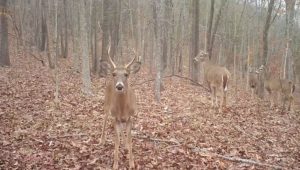 Short Clip:
Short Clip:
Watch as this buck busts us and we aren’t even there!
New Weekly Blog:
Life and hunting have a lot in common. Author Andy Andrews has collected and shared principles that can be applied to aspects of hunting and life.
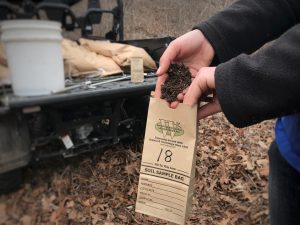
Tip of the Week:
Soil samples are a quick, easy way to find out how to improve the soil. The soil health ultimately affects the health of deer! Get your soil samples completed now and be ready to plant spring food plots!
Warning: This video contains information about prescribed fire which is a management tool for trained professionals using the appropriate tools for the situation.
Fire, Habitat and Hunting
Deer season is over and turkey season is just around the corner. That means the work is just beginning.
We have several large prescribed fires planned for the week. Right now, I am sitting in the office catching up on several tasks while the interns mix fire fuel and pack the leaf blowers in the Yamaha. Today we plan to burn several large bedding areas. These areas are designated sanctuaries for our deer herd.
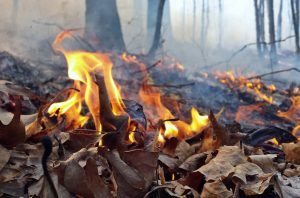
Prescribed fire is a great tool for habitat management.
Last fall Flatwood Natives Habitat Solutions sprayed all the hardwood saplings in these areas. The saplings have had several months to die and dry before the prescribed fire. Our goal today is to burn the native grasses and forbs, encouraging new growth this spring. The saplings may remain standing but fire will make them even more brittle and assist in a timely decomposition.
As a wildlife manager and hunter I am very excited to burn these areas. I can’t stop thinking about turkeys. Burned areas make for great bugging areas for turkeys. The terrain is open and turkeys can watch for predators and find great food sources. This can make for some great spring turkey hunting.
Turkeys are on my immediate radar but I cannot forget about the deer. Within a few months these burn areas will serve as great fawning habitat. As new tender grasses and forbs pop up over the next few weeks, these burn areas will also be a great food source for deer. Of course, the hunter in me will be looking for sheds and trails trying to figure out which deer are in the area and how they are using the terrain. These prescribed fires make for some great late season scouting!
We will be very busy today and during the next few months with prescribed fires. Each fire brings a great reward – improved habitat and better hunting. I hope you get the chance to work on your Proving Grounds soon and can enjoy the fruits of your labor come hunting season.
Enjoy Creation,
Daniel
The Late Winter Stress Period
We have been blessed with a mild winter at The Proving Grounds. Even so, the local deer herd seems hungry. Late winter is a stressful time for whitetails across most of their range. Lack of food, cold temperatures, and months of hunting pressure create a potent mixture of hardship. During this time, deer are trying to regain the weight lost during the rut. They must also start preparing for the spring fawning season and period of antler growth.
During this time of year, there is often a shortage of the forages whitetails need to sustain a healthy weight throughout the winter. This period of deficiency is intensified in times of drought. In many areas, most native forages have been browsed to exhaustion which brings up the importance of food plots during late winter. As you may have noticed in some of our recent images, the forage in the food plots at The Proving Grounds have been heavily browsed. We tagged more does during 2016 than during previous years due to the drought and increasing deer population. This spring we plan to establish a few more acres of food plots. Our objective is to reduce stress and increase the health of the local whitetail herd during the annual winter stress period.
In addition to establishing and maintaining food plots, we are using prescribed fire to improve the quality and quantity of native forage. Stay tuned, watch our progress and see how the deer herd responds!
Enjoy creation,
Tyler
Controlling Tick Populations
It’s no secret that tick populations are high in the Ozark Mountains. These abundant parasites can carry STARI, Lyme disease, Rocky Mountain spotted fever, and a variety of other diseases that are harmful to humans and wildlife. If you can remove an imbedded tick before it’s been on you for 24 hours, you should be fine. But unlike us, a deer can’t remove many of the ticks on their body. In the past we’ve hoped to reduce the amount of ticks through burning. While prescribed burns are an important habitat management tool, they did not noticeably reduce the ticks in burnt areas. We suspect this is because most of our prescribed fires are 50 acres in size or less. When new vegetation flushes it’s very attractive to deer and ticks from these deer rapidly repopulate the area.
Because of this, the GrowingDeer Team is starting a new experiment to see if we can reduce the number of ticks on deer (and us) at The Proving Grounds.
Recently, one of our clients had tremendous success with a feed called Antler-X-Treme. It has a proprietary mix of garlic and other natural ingredients that have been shown to keep ticks from staying imbedded in a deer. If this product works as well on The Proving Grounds as it did for our client, we could see higher fawn survival and up to a 15% increase in antler size!
Tyler, the other spring intern, and I have started feeding Antler-X-Treme at nine locations and we’re excited to see if the deer have fewer ticks compared to previous years (based on trail camera images, etc.). The project is off to a great start as deer started consuming the feed the first night it was available! I’m looking forward to sharing our results with you.
Enjoy Creation,
Jessica
When Is The Best Time To Tag Does?
Hunters often debate the question, “When is the best time to harvest does?” A simple answer is whenever the opportunity arises. If done at the right time, there are often added benefits to the remainder of the hunting season. If the adult sex ratio is unbalanced we often suggest doing the bulk of removal during the early portions of season.
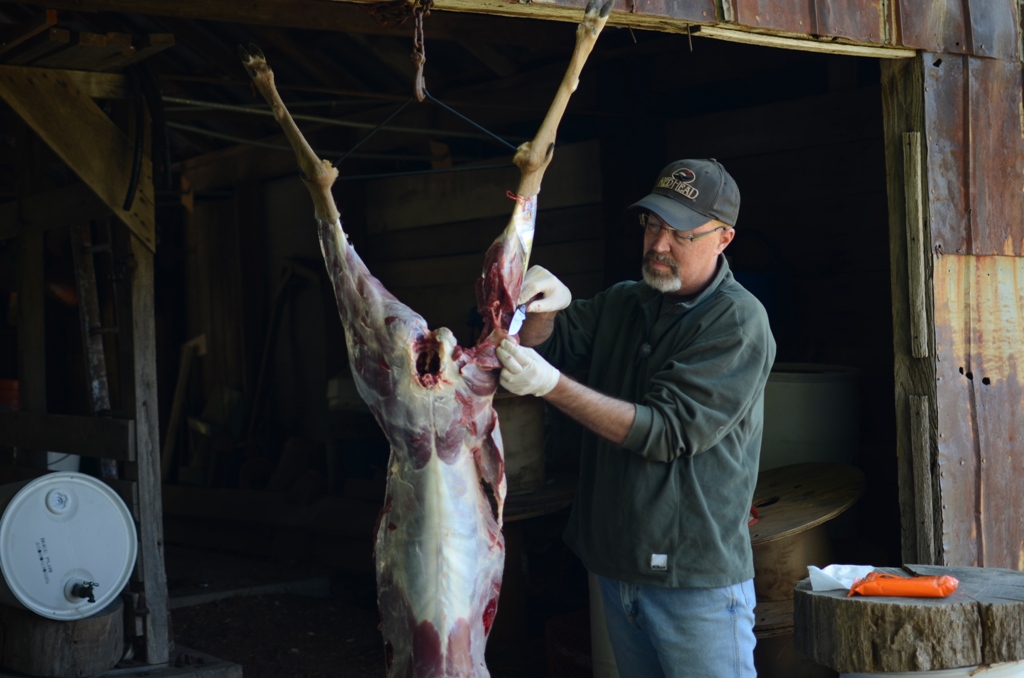
Fill the freezer during the early season!
Harvesting does during the early portion of season accomplishes many objectives. First and foremost, more food is saved for deer during the potentially harsh winter months. Deer that are taken during the later part of season have been foraging on food plots for months. If these deer are harvested as season opens then more food will be available for deer that make it through season. Severity of winters is always unknown, so conserving forage by tagging antlerless deer early is often a sound practice. It’s important to remember the stress associated with carrying fawns and rutting behavior. Having adequate nutrition is a must to get deer through the winter months in the best condition possible.
Another reason to reduce deer numbers earlier rather than later is the possibility of experiencing a more intense rut. When the adult sex ratio is balanced, bucks must work harder to find another receptive doe. This means more time on their feet. When a deer is more active it is typically easier to harvest. By tagging does earlier rather than later, it’s possible to experience the rut activity you’ve dreamed about.
In addition, harvesting does early can take the pressure off the season. Hunters get additional experience and confidence in their abilities. This added confidence in marksmanship and woodsmanship will be put to the test during the long sits in November.
There are many benefits to tagging does as season opens. If the land you hunt is in need of doe management consider doing so in the first few weeks of season.
Enjoying Creation,
Matt Dye
Timber Tracts And Velvet Racks – Episode #345
New Video
Deer hunting in thick timber can be a challenge! The GrowingDeer Team goes deep into the timber country of Mississippi to develop a property plan for better deer hunting. Click here to see recommendations on how to transform a timbered property into a wildlife haven.
The 2016 hit list is under way. Want to see what bucks are already on the list? We’ve got some familiar faces and even a new one. This fall is already shaping up to be a great one!
It’s never too early to break out the rifle and get it sighted in. Grant heads to the local Bass Pro Shops to send some Winchester rounds down range! Deer season is approaching fast!
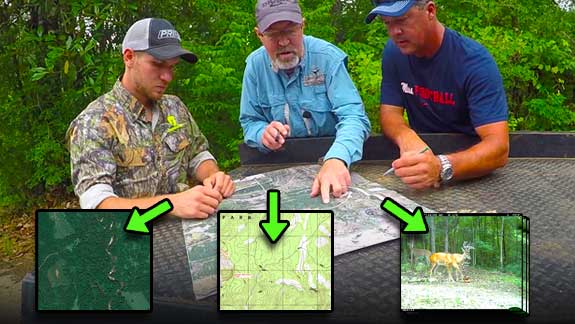 Field Day:
Field Day:
Have your property analyzed by the GrowingDeer Team! Bring your property maps, harvest data, and photos to our Fall Field Days! We are offering a limited number of one-on-one consultations with the GrowingDeer Team. After registering for Fall Field Days secure your spot by emailing info@growingdeer.tv. We are excited to work with you on Your Proving Grounds! Leave Fall Field Days with a fresh hunting and management plan!
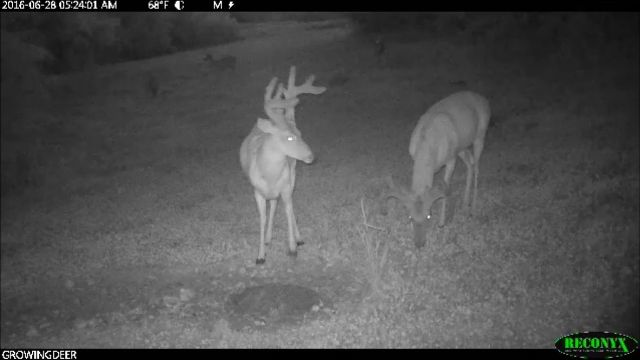 New Weekly Blog: Finding Patterns Of Hit List Bucks
New Weekly Blog: Finding Patterns Of Hit List Bucks
It’s planning time! Matt discusses what to do when your hit lister appears. Make your hunting season a success starting now!

Tip of the Week:
Get your bow form right! Now is the time to use the blind bale technique!



